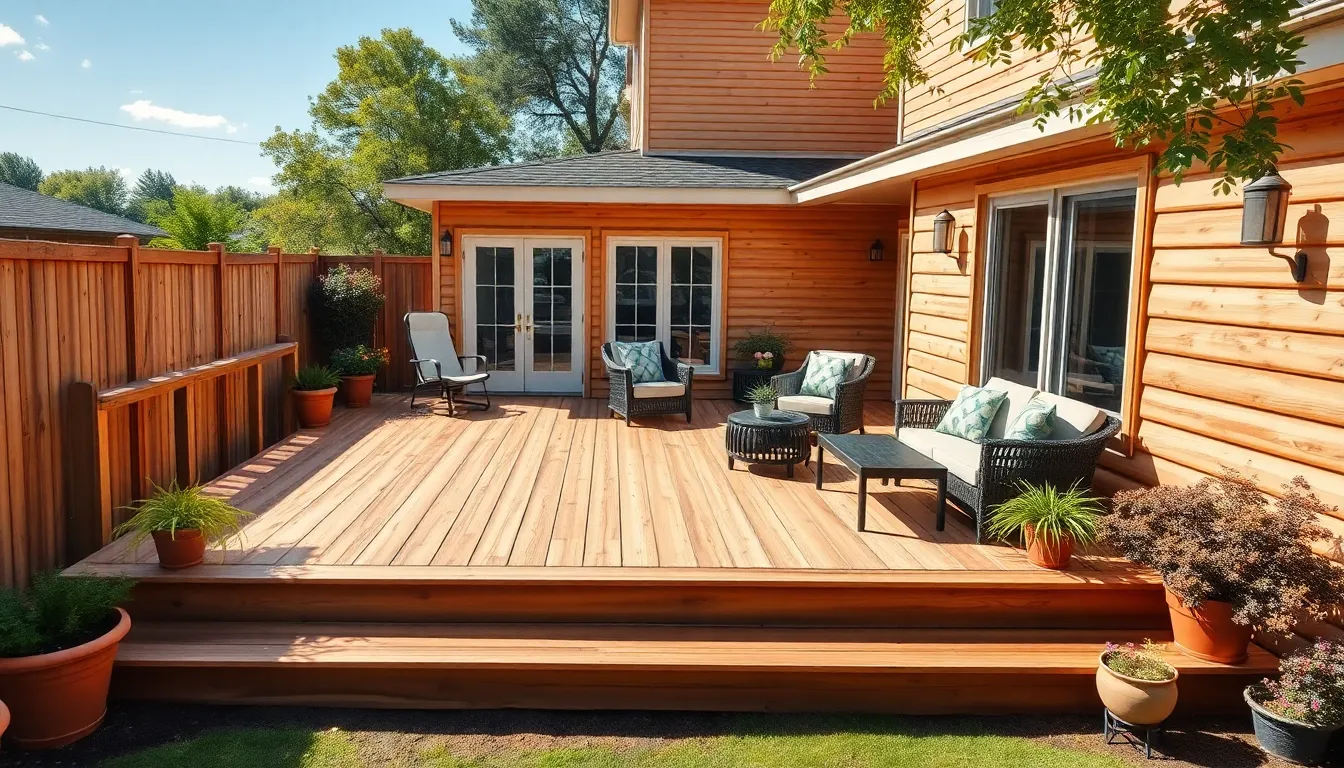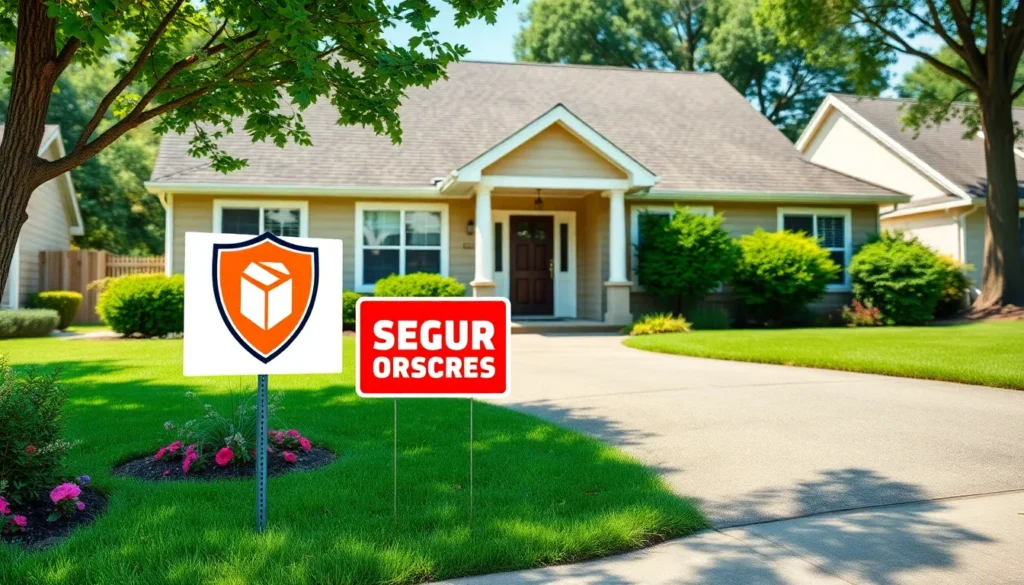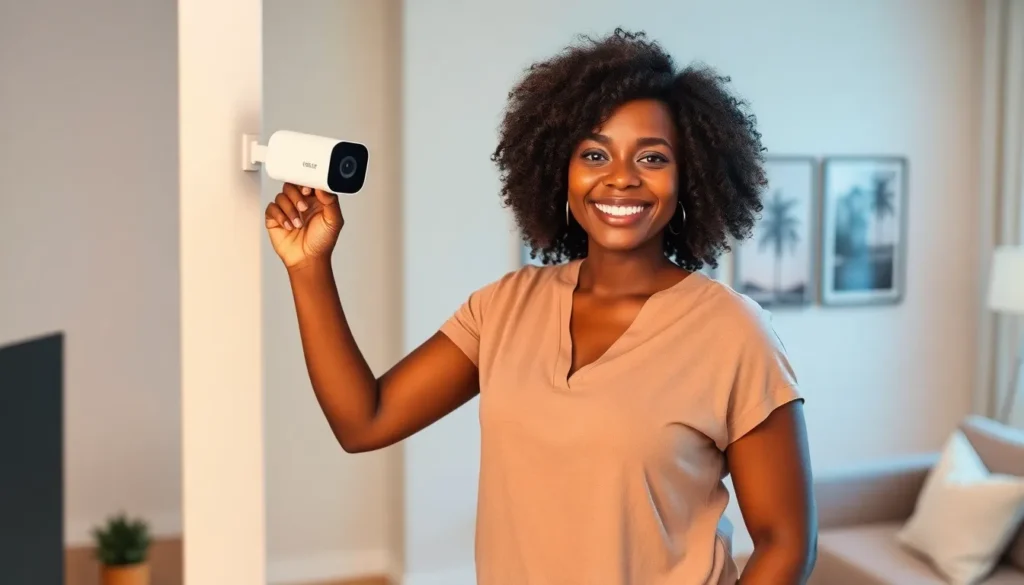Choosing the right decking materials can transform an outdoor space into a stunning oasis. With a variety of options available, homeowners often find themselves overwhelmed by the choices. From traditional wood to modern composites, each material offers unique benefits and aesthetics that cater to different tastes and budgets.
Understanding the pros and cons of each decking material is crucial for making an informed decision. Factors like durability, maintenance, and environmental impact play significant roles in selecting the perfect option. This article will guide readers through the most popular decking materials, helping them create a beautiful and functional outdoor area that lasts for years to come.
Table of Contents
ToggleOverview Of Decking Materials
Various decking materials cater to aesthetic preferences, durability requirements, and maintenance levels. Each material presents unique characteristics that influence outdoor space design.
Wood Decking
- Types: Common wood species include pressure-treated pine, cedar, and redwood.
- Aesthetics: Wood offers a natural appearance and warmth, enhancing outdoor environments.
- Durability: It lasts 10 to 30 years, depending on maintenance and species type.
- Maintenance: Regular sealing and staining are necessary to prevent rot and fading.
Composite Decking
- Materials: Composed of wood fibers and recycled plastics.
- Aesthetics: Available in various colors and textures, mimicking natural wood.
- Durability: Lasts 25 to 30 years with resistance to fading, scratches, and mold.
- Maintenance: Low maintenance compared to wood; requires occasional cleaning.
PVC Decking
- Composition: Made entirely from polyvinyl chloride (PVC).
- Aesthetics: Offers vibrant colors and a smooth surface finish.
- Durability: Can last up to 40 years with excellent resistance to moisture and insects.
- Maintenance: Requires minimal upkeep; simply clean with soap and water.
Aluminum Decking
- Materials: Crafted from extruded aluminum.
- Aesthetics: Available in various styles, providing a modern look.
- Durability: Lasts over 50 years; resistant to rust, decay, and insects.
- Maintenance: Very low maintenance; does not need sealing.
Bamboo Decking
- Sustainability: Sourced from fast-growing bamboo, offering eco-friendly options.
- Aesthetics: Provides a unique, contemporary look with rich colors.
- Durability: Can last 15 to 25 years with proper care.
- Maintenance: Requires regular sealing to maintain appearance.
Conclusion
Selecting decking materials significantly affects outdoor design, longevity, and upkeep. Understanding each material’s strengths and weaknesses helps in making informed choices for outdoor spaces.
Types Of Decking Materials

Understanding the various types of decking materials aids in making informed choices. Each option presents unique characteristics that suit different preferences and requirements.
Wood Decking
Wood decking remains popular for its classic appearance and natural beauty. Common species include pressure-treated pine, cedar, and redwood. Pressure-treated pine offers affordability and resistance to decay, making it a practical choice for budget-conscious projects. Cedar provides a warm tone and natural resistance to insects, while redwood features stunning aesthetics and durability. Regular maintenance, such as sealing and staining, is essential for longevity.
Composite Decking
Composite decking blends wood fibers and recycled plastics, delivering a durable and low-maintenance option. This material resists fading, staining, and rot, making it suitable for various climates. Available in multiple colors and textures, composite decking mimics the look of real wood. Brands often utilize proprietary technologies to improve fade resistance and surface durability.
PVC Decking
PVC decking features a synthetic composition, offering vibrant colors and a variety of finishes. Its non-porous surface resists scratches, stains, and mold, ensuring minimal upkeep. PVC decking is lightweight and easy to install, making it ideal for DIY projects. Additionally, manufacturers often provide warranties that reflect the material’s durability and long-term performance.
Aluminum Decking
Aluminum decking stands out for its remarkable strength and rust resistance. This lightweight material withstands harsh weather conditions and does not warp or splinter. Aluminum decking typically comes with a powder-coated finish, ensuring vibrant colors and minimal fade. Its fire-resistant nature enhances safety in outdoor installations.
Pros And Cons Of Each Material
Understanding the advantages and disadvantages of various decking materials helps in making informed decisions. Here’s a breakdown of the pros and cons for wood, composite, PVC, and aluminum decking.
Wood Decking Pros And Cons
Pros:
- Aesthetic Appeal: Wood decking offers natural beauty and warmth that enhances outdoor spaces.
- Cost-Effective Options: Pressure-treated pine provides an affordable entry point for decking materials.
- Sustainability: Certain woods are sourced sustainably, making them an eco-friendly choice.
Cons:
- Maintenance Requirements: Wood requires regular sealing, staining, and cleaning to maintain its appearance and prevent decay.
- Durability Concerns: Wood is susceptible to warping, splitting, and insect damage, reducing its lifespan.
- Natural Variability: Variations in color and grain may lead to inconsistent appearances over time.
Composite Decking Pros And Cons
Pros:
- Durability: Composite material withstands harsh weather, UV rays, and wear without fading or splintering.
- Low Maintenance: Requires minimal upkeep, typically needing only occasional washing with soap and water.
- Environmental Considerations: Often made from recycled materials, composite decking contributes to sustainability.
Cons:
- Initial Cost: Higher upfront costs compared to traditional wood can deter budget-conscious buyers.
- Heat Retention: Composite decking can absorb heat, making surfaces uncomfortable in direct sunlight.
- Limited Aesthetic Appeal: While available in various colors, some may prefer the natural look of wood.
PVC Decking Pros And Cons
Pros:
- Weather Resistance: PVC decking resists moisture, rot, and insects, leading to a longer lifespan.
- Variety of Colors: Available in a wide array of colors and finishes, allowing for numerous design options.
- Low Maintenance: Requires minimal care; cleaning typically involves a hose and mild detergent.
Cons:
- Higher Cost: Generally more expensive than composite and wood options, impacting budget considerations.
- Recyclability Issues: Not all PVC materials are recyclable, raising environmental concerns.
- Slippery Surface: Can become slippery when wet, posing safety risks.
Aluminum Decking Pros And Cons
Pros:
- Exceptional Durability: Resistant to rust, insects, and weather damage, offering long-term performance.
- Fire Resistance: Non-combustible properties provide added safety features in outdoor areas.
- Lightweight and Strong: Aluminum combines strength with a lightweight design, facilitating easier installation.
- Cost Implications: Higher initial investment compared to wood and composite decking options.
- Heat Conductivity: Aluminum can become hot under direct sunlight, affecting comfort levels for bare feet.
- Limited Color Choices: Fewer aesthetic options compared to wood and composite materials may not meet all design needs.
Maintenance And Durability
Maintenance practices vary among decking materials, impacting their overall durability.
Wood Decking
- Wood decking requires regular sealing, staining, or painting, typically every one to three years, to protect from moisture, UV rays, and pests.
- Decay and insect damage can occur without proper maintenance, shortening its lifespan to 10-15 years.
- Species selection affects durability, with pressure-treated pine enduring better than untreated varieties.
Composite Decking
- Composite decking demands minimal upkeep, requiring only periodic cleaning with soap and water.
- The lack of sealing needs translates to less labor and cost over time, contributing to its popularity.
- The lifespan of composite materials often exceeds 25 years, resisting warping, fading, and splintering.
PVC Decking
- PVC decking necessitates negligible maintenance, typically just occasional cleaning, due to its weather-resistant properties.
- This material does not absorb moisture, preventing mold growth and extending its use beyond 30 years.
- Limited color fading occurs over time, depending on manufacturing quality.
Aluminum Decking
- Aluminum decking withstands harsh weather conditions, needing only occasional washing to maintain appearance.
- Its resilience against rust and corrosion promotes a lifespan of 30 years or more, making it ideal for various climates.
- High durability contributes to fewer repairs and replacements.
Bamboo Decking
- Bamboo decking requires sealing every one to two years, enhancing its moisture resistance and increasing lifespan.
- Durability hinges on quality; treated bamboo can last 15 years or more with proper care, while untreated options may deteriorate quicker.
- Maintenance is vital for preserving its aesthetic and structural integrity.
Regular maintenance correlates directly with the durability of decking materials. Understanding specific needs helps ensure longevity and performance, ultimately enhancing outdoor living environments.
Cost Comparison
Understanding the costs associated with different decking materials is crucial for effective budgeting. Here’s a breakdown of the average costs for several popular options:
| Decking Material | Average Cost (per square foot) | Lifespan (years) | Maintenance Needs |
|---|---|---|---|
| Pressure-Treated Pine | $2 – $5 | 10 – 15 | Regular sealing, staining, or painting every 1 – 3 years |
| Cedar | $4 – $8 | 15 – 20 | Regular sealing and staining every 1 – 3 years |
| Redwood | $5 – $10 | 15 – 20 | Regular sealing and staining every 1 – 3 years |
| Composite | $6 – $12 | 25+ | Periodic cleaning |
| PVC | $7 – $15 | 30+ | Negligible maintenance |
| Aluminum | $10 – $20 | 30+ | Occasional washing |
| Bamboo | $3 – $8 | 15+ | Sealing every 1 – 2 years |
Pressure-treated pine is the most cost-effective option, while aluminum decking commands the highest price. Composite and PVC decking offer longer lifespans with lower maintenance needs, justifying their higher costs.
Factors influencing pricing include material quality, brand reputation, and local market conditions. Composite and PVC decking, though initially more expensive, often provide savings in maintenance over time. Ultimately, the total cost of ownership should be considered, which includes installation and maintenance expenses alongside the initial material purchase.
Selecting the right decking material is crucial for creating an inviting outdoor space. Each option offers unique advantages that cater to different preferences and needs. By understanding the characteristics of wood, composite, PVC, aluminum, and bamboo decking, homeowners can make informed choices that align with their lifestyle and aesthetic desires.
Considering factors like durability, maintenance, and cost ensures that the chosen material not only enhances the beauty of the space but also stands the test of time. With careful thought and planning, anyone can transform their outdoor area into a stunning retreat that reflects their personal style and meets practical requirements.


